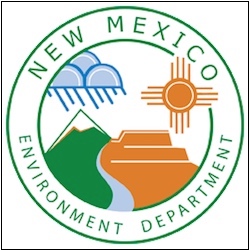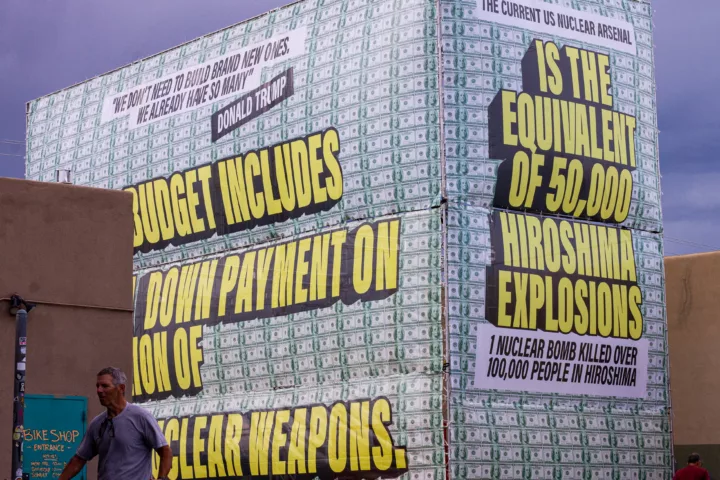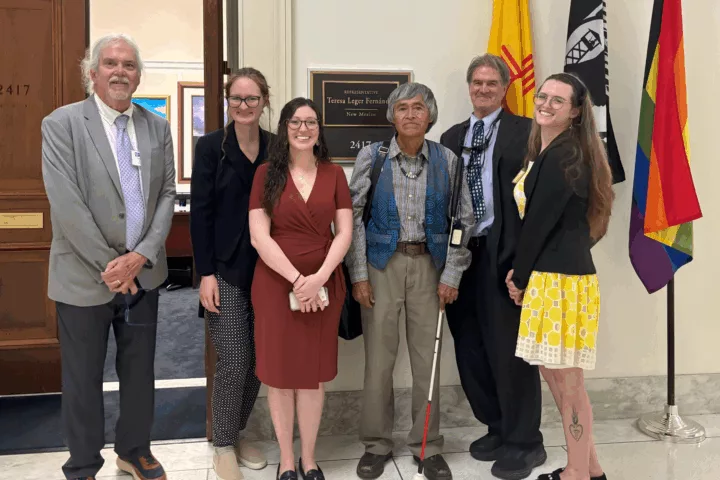
On March 1, 2005, after arduous negotiations and threats of litigation, the New Mexico Environment Department (NMED), Department of Energy (DOE), and Los Alamos National Laboratory (LANL) entered into a Consent Order specifying the schedule for investigation and cleanup of the Lab’s hundreds of contaminated sites. This Consent Order (CO) was LANL’s agreement to fence-to-fence cleanup of Cold War legacy wastes, which NMED began to enforce.
However, under Governor Susana Martinez the Environment Department granted more than 160 milestone extensions at the Lab’s request. In December 2015 LANL missed the last legal milestone for a report on final cleanup of Area G, the Lab’s largest radioactive and toxic waste dump.
In June 2016, NMED and LANL signed a new Consent Order that solved many of LANL’s problems by removing fines and enforceable schedules.
This was a bad deal for New Mexico. The 2016 Consent Order surrendered State of New Mexico enforceability by creating a giant loophole where DOE and LANL can avoid cleanup by claiming that it is either too expensive or impractical. Further, the Environment Department forgave at least $300 million in potential penalties at a time when the State was facing a $600 million budget deficit. The new Consent Order put DOE and LANL in the “cleanup” driver’s seat instead of New Mexico.
Some key points of comparison between the two Consent Orders
| 2005 | 2016 |
| Enacted by Gov. Bill Richardson and NMED Sec. Ron Curry. | Enacted by Gov. Susanna Martinez and NMED Sec. Ryan Flynn. |
| The original but unstated purpose of the 2005 Consent Order was to compel DOE and LANL to ask Congress for additional funds to accelerate comprehensive cleanup.
|
Shortly after the 2016 CO was signed DOE issued a baseline lifecycle cost estimate of LANL cleanup that projects flat funding flat at ~$200 million per year over 30 years. NMED is on record that $250 million per year would be appropriate. DOE’s baseline also claimed that only 5,000 cubic meters of radioactive and toxic wastes need to be treated. There is an estimated 200,000m3 of wastes at Area G alone. DOE plans to leave those wastes permanently buried ~900 feet above our groundwater, while plutonium has already been detected 200 feet below Area G’s surface. |
| The 2005 CO tried to ensure cleanup regardless of the cost.
|
The CO states, “DOE shall update the milestones and targets… on an annual basis, accounting for such factors as changes in anticipated funding levels.” |
| The 2005 CO required cleanup projects to have enforceable technical standards and completion deadlines for every step from the beginning. Lack of funding was not an excuse for lack of cleanup. | The 2016 Consent Order instituted a “Campaign” approach with deadlines enforceable only for the year they are scheduled, all selected by DOE and LANL. Meeting technical standards is optional. |
| From 2005 through about 2011, DOE and its contractors, under NMED enforcement, made significant progress towards cleanup of the Lab.
|
In 2012, DOE and NMED entered into a “Framework Agreement” putting cleanup on the back burner while focusing on shipping surface-stored transuranic radioactive wastes to the Waste Isolation Pilot Plant. This was the beginning of over 160 milestone extensions to the 2005 CO approved by NMED, causing cleanup to grind to a halt. LANL then shut down WIPP for nearly 3 years with an improperly treated waste treated waste barrel that ruptured, costing taxpayers ~$3 billion to reopen. |
| NMED approved some extensions if work was more difficult and took longer than estimated.
|
NMED approved extensions for work not even started (sometimes multiple times) because the Framework Agreement was the budget priority and took money away from cleanup. |
| The 2005 Consent Order had a final milestone date that provided the opportunity for final public comments as required by New Mexico’s hazardous waste regulations. | The 2016 Consent Order is open-ended with no enforceable interim dates beyond those selected by DOE for the next year. No final date and no opportunity for final public comment. |
| LANL had accrued potential stipulated penalties for missed milestones estimated at over $300 million at a time when the State was facing a $600 million budget deficit. | The 2016 Consent Order forgave “any outstanding violations of the 2005 Consent Order.”
|
| Remediation decisions were required to be made after considering any submitted public comments. | DOE is allowed to opt out of any cleanup because of lack of funding, “impracticability” or high cost of cleanup, with no opportunity for public input. |
| The groundwater chromium plume was not reported by LANL until after the signing of the 2005 CO, which was quickly incorporated into CO work plans to begin addressing this serious problem. | Claimed lack of flexibility in the 2005 CO was erroneously cited as justification for the 2016 CO. Similarly, NMED under Gov. Martinez claimed that the 2005 CO wasn’t working, which is not accurate. The 2005 CO was made ineffective by more than 160 milestone extensions. |
Moving Forward
Under a new governor, the Environment Department should institute a new Consent Order modeled on the 2005 Consent Order, modified as needed with new realistic milestone compliance dates.
A new Consent Order should be devoid of giant loopholes such as lack of funding, which disincentivizes DOE from seeking increased cleanup funding. Most of all, the new Consent Order should be enforceable with clearly defined enforceable technical standards and compliance dates subject to stipulated penalties that compel comprehensive cleanup.
The New Mexico Environment Department’s mandate is to protect New Mexicans, the environment and our precious water resources. It is not NMED’s responsibility to accommodate DOE’s funding priorities which seek to expand the nuclear weapons programs that caused the mess to begin with. Lack of adequate DOE funding for accelerated cleanup funding is hard to swallow when nuclear weapons programs are awash in taxpayers’ cash. Genuine comprehensive cleanup would be a real win-win for New Mexicans, permanently protecting the environment while creating hundreds of high paying jobs.


